June 29th, 2007
Even as efforts are underway to resolve the ethnic crisis through power sharing arrangements new developments threaten to upset the delicate ethnic prevalent in the North – East. A long standing grievance of the Tamil and Muslim people in the Eastern province is that of demography being altered through state aided colonisation schemes. Amparai in the East is the only district in Sri Lanka where the Muslims are the single largest ethnicity. Yet A?a??A?colonisation A?a??A?has reduced that majority status considerably. Disturbing evidence has come to light that fresh initiatives are on to dispossess Muslims of their lands in Pottuvil electoral division. Pottuvil itself is seen as the entry – point of Sinhalaisation in the East. The choice of a A?a??A?lionA?a??A? associated with the majority community as the symbol for Muslim majority Amparai district has heightened anxiety further. Land has become a crucial issue in evolving satisfactory and fair systems of devolution for Sri Lanka.

Children in Sainthamaruthu, Ampara District
[Photo: HumanityAshore.org]
The coalition of Muslims and Tamils for Peace and Coexistence (CMTPC) has released a special report focussing on this issue. It is titled A?a??A?Territorial Claims, Conquests and Dispossession in the A?a??A?New EastA?a??A?:The Growing concerns of the Muslims of Amparai.
The Federal IdeaA?a??A? reproduces that report in full:
Territorial Claims, Conquests and Dispossesion in the A?a??E?New EastA?a??a??: The growing concerns of the Muslims of Amparai
Coalition of Muslims and Tamils for Peace and Coexistence (CMTPC)
The new flag for the Eastern Province, introduced by the government, displays three animals: a lion symbolizing the Amparai district, an eagle for Trincomalee and a fish for Batticaloa. Batticaloa has long called itself the land of the A?a??A?singingA?a??A? fish, but why an eagle was chosen for Trincomalee is unclear.
The use of the Sinhala lion to represent the Muslim dominated Amparai district is terrifying: erasing the Muslim presence in the east, it is a potent symbol of the reality on the ground- the Muslims do not count in the larger context of our ethnic conflict.
The east is the testing ground for the success of any resolution to the conflict. All of our communities need to feel a sense of well being and belonging for peace and stability to prevail. But recent actions of the government and forces aligned to it are increasing the sense of insecurity felt by different communities.
The use of the lion for Amparai district suggests that this is a continuation of the post-independence Sinhalisation of the Eastern Province that has found new and brutal fervour under the administration of President Mahinda Rajapakse.
We speak here with alarm and with concern of specific acts by state agencies that continue the dispossession of the Muslim people through land acquisition and demarcation by the state. The Muslims of the Pottuvil region, who are already in a insecure position have in recent times felt the brunt of the heavy hand of state sponsored programmes.
These programmes have created anxiety and fear in the community. The Pottuvil region is multi cultural and multi ethnic, with an ethnic break down of 78.11% Muslims, 19.79% Tamils and 2.11% Sinhala. Traditionally, the different communities had co-existed peacefully with 90% of the population engaged in agriculture and the rest 10% in other forms of employment.
We give here four incidents or acts that have a direct bearing on the welfare of the people of the region:
1. The gazette notice dated 1454/26 of July 2006, declares that 1531 hectares of land of the Lahugala district secretariat of the Ampara District will be declared a National Park, which will be referred to, hereafter as the A?a??A?Lahugala-Kithulana National ParkA?a??A?. Since the borders of the Pottuvil and Lahugala Divisions are still under dispute (ref. Alfred Silva commission) Pottuvil Muslims feel that through this move the government is trying to take over land along the Lahugala Pottuvil main road that the Muslims have had access to and had been the means of livelihood for most of the people there.
2. On the 25 of the September, 2006, a letter signed by the Chair of the Lahugala Pradeshiya Sabha, to the Ministry of Public Administration, with copies to the President and the Minister of Labour Mr. Mervyn Silva, requested the annexation of the three gramasevaka divisions, Sarvodaya puram, Sinna Ulle, and Pasarichennai, (Periya Ulle) with the Lahugala Division, citing discriminatory practices of the officers against minority Sinhala and Tamil villagers. The ethnic break down for these three grama sevaka divisions shows an overwhelming Muslim majority: (91.5% Muslim, 4.7% Sinhala, 3.8% Tamil). So the motive for moving a Muslim majority area into a larger Sinhala unit in this instance is easily apparent.
3. In December 2005, official inquiries were made about identifying all the places of Buddhist worship and Dagabas in the Ampara district. A letter dated and signed by the G.A. of Ampara addressing the Pradeshiya Lekam makes this request. In Pottuvil alone they have indicated 07 places as sites of Buddhist heritage (Sangamankanthai, Kirimetiaaru, Pottuvil town, Muhuthumahaviharai, Eatham, Thaharampolla, Rottaiviharai).
4. It has also been brought to our notice that a thousand acres surrounding the Shasthiravelli STF camp in the Pottuvil region was previously under consideration as a High Security Zone, which had led to annexation of land that has traditionally been used by the people of the region. Now it has been declared as Shasthiravelli Temple land. There was a protest by the people of Pottuvil demanding access to this area in April 2007.
It is unclear whether all these four concurrent developments have progressed any further. For instance it is not clear if the request for the three gramasevaka divisions, Sarvodaya puram, Sinna Ulle, and Pasarichennai, (Periya Ulle) to be annexed to the Lahugala Division will go forward.
The Divisional Secretary of the Pottuvil District in a letter to the G.A. Ampara gave a detailed response, denying all charges of discrimination. He further noted that fishermen who came from other parts of the country indulged in unlawful occupation of state land and transgressed existing rules governing the buffer zone of the coastal areas and had been demanding permits for their illegal activities which were not acceded to by his office. As far as we know the matter has not progressed beyond this point but there are clear signs that there is growing pressure to push this issue further.
These acts of acquisition or potential annexation, taken in isolation, might seem purely bureaucratic or in the interests of military security. The policies can in fact be justified as being driven by important principles such as the conservation of nature, the right to equality for all ethnic communities and fair governance, the preservation of Sri LankaA?a??a??s ancient history and national security.
While these principles should be recognized and not dismissed, it is important to recognize the context in which these policies are being implemented and the agenda of those pushing these policies. If one approaches it from the perspective of history, the history of the minority communities, these acts emerge as part of a history where state-aided programmes have brought about demographic changes in the east. In this instance, these acts appear to be aimed at dispossessing the Muslim majority population of their land.
Pottuvil is politically an isolated division but it has featured prominently in the demographic and administrative battle for the East. Situated on the edge of Ampara district with a majority Muslim population, it has been used as the entry point for Sinhalisation of the east. Muslims politicians often neglect this division, leaving it to the consideration of one or the other of the two ruling parties (UNP or SLFP).
It is sandwiched between two Sinhala areas, Panama and Lahugala. Lahugala and Panama are two non-contiguous areas brought together as one DS division-Lahugala DS. When the Ampara district was created, a large Sinhala population was added on giving the district one of the oddest looking boundaries – a coastal belt linked to a truncated inland area, making crystal clear the ethnic agenda of the central government to avoid the emergence of a clearly Muslim-majority district. Like in other areas of the East and the North where new Sinhala names have proclaimed the expansion of the Sinhala colonization programme, Ampara too has undergone symbolic and demographic changes owing to state aided colonization programmes.
Amparai remains the play thing of ambitious politicians. The M.P for Amparai, who was formerly the Deputy Minister in charge of Mahaweli Development is back in power as Minister for Planning and Implementation and is in an influential position to steer the course of events in this unfolding story of annexation. He has, in fact, written a letter to the District Secretary of Pottuvil on 20th April, 2007, requesting/demanding that the thousand acres surrounding the Shasthiravelli STF camp be allocated to the Shasthiravelli temple.
The developments cited above follow other recent changes in land demarcation. In December 2005, the boundaries of the Pottuvil region were redrawn (which are still in dispute), where some of the land belonging to people from Pottuvil was brought under Panama Pattu, causing great difficulties to them, where language and transport were concerned.
Furthermore, and more importantly, grazing land that was traditionally used by the Pottuvil people was brought under Panama Pattu, leading to loss of access to this land and the subsequent decline in the 40, 000-cattle-strong livestock economy of the district. The redrawing of the boundaries of the Pottuvil region discriminates in many ways against the Muslim majority population The people of Pottuvil had already been dispossessed, by the enactment of the buffer zone in the region following the tsunami.
The redrawing of the boundaries exacerbates the situation of shortage of land for the people in the region. . They were not consulted in any of the actions; they had no say in what affected them most. The annexation of land by the state, land that has been traditionally used by the people of the region, as grazing land and for seasonal cultivation spells great loss to the economy and the welfare of the people. Steps need to be taken to protect forest cover and to ensure that the land is used in a sustainable manner; but this should be done by taking into account the needs and rights of the local people.
Arugam Bay in the Pottuvil region, is one of the biggest tourist attractions, not only of the east, but of the entire country and is a piece of prize real estate coveted by politicians and big business alike. In the wake of the tsunami and its destruction, the state instituted land-protection programmes including a buffer zone, which were perceived as serving the interests of big business from outside at the expense of those of the people of the area.
The acts of annexation are accompanied by other symbolic representations of appropriation, symbolic of conquest and hegemony. Buddhism in Sri Lanka, which in its fundamentals is a religion of peace and tolerance, is an integral part of state hegemony and is often experienced by minority communities as state aggression. Conquest of land is symbolized by what is perceived as Sinhala Budhisisation. In this respect, the erection of the statue of the Buddha among minority dominant areas has always spelt trouble, exacerbating ethnic tensions and in some instances, leading to outright confrontation.
Much of the time, the erection of a statue is not done by local Buddhists but by groups or agencies associated with the state. For instance, Ulle, a majority Muslim area in the Pottuvil region and a tourist hot spot, has been at the heart of the controversy of seemingly competing interests from the time of the tsunami. Two days after the tsunami in the midst of the disruption, dire loss, and anguish felt by the people all around, a statue of the Buddha on a podium was erected under cover of night, leading to acrimony and unnecessary conflict. In this climate, we cannot but be alarmed at the Buddhisisation, topographically, on the part of the state and see it as a sign of a Sinhala-Buddhist domination.
There are other disturbing accounts accompanying our narration. On March, the JHU and the breakaway LTTE group TMVP, led by Karuna discussed issues collaboration regarding the protection of the cultural heritage of the eastern province. At the meeting, the JHU also raised issues of conservation in the East. This meeting was a part of a wider JHU strategy to take to another level the protection of Buddhist cultural and religious sites and to champion environmental issues.
The JHU politician Champaka Ranawaka is the Minister for Environment and Natural Resources. Thus the JHU is in a powerful position to push forward its campaign. Reports of the meeting contained references to A?a??A?evil elementsA?a??A? that were seeking to destroy cultural monuments. In the context of the JHUA?a??a??s anti-minority rhetoric this A?a??E?evilA?a??a?? can mean only one thing. Subsequently, we have had people of the region report to us that members of the Karuna faction had been threatening the people of the area with eviction orders from the A?a??A?sacred Buddhist landsA?a??A? they were A?a??A?occupying.A?a??A?
This has created considerable panic among the people, who have been exposed to a number of strategies to progressively dispossess them of their land. Also, TMVP, like its parent organization, the LTTE, has been attempting to establish its dominance over the Muslim community in the east, and is mimicking the LTTEA?a??a??s policies of violence against Muslims targeting and appropriating their lands.
Like the LTTE, whose ideology and practices it finds impossible to break away from, the Karuna faction too, is deeply mired in ethnicising the conflict in the east, increasing the sense of insecurity felt by the Muslims of the region. The collaboration between Sinhala Buddhist forces and TMVP itself might be short lived, but it emerges from the ultra-nationalists positions of extremism from both the Sinhala and Tamil communities, who insist that Muslims are interlopers and aliens on their homeland. Such actions if not condemned and eradicated from their very inception, can intensify fears of ethnic cleansing and exacerbate ethnic hostilities beyond repair.
The massacre of ten Muslim labourers in Radal Kullam (Radella) on September, has made the Muslim community even more vulnerable in the face of increasing threats to their security and livelihood. Apart from the massacre itself, what followed in its trail has sparked wide spread controversy, in particular the manner in which the government and forces allied to the government covertly tried to cover up the incident.
While the local Muslim community claimed that the STF was responsible either directly or in complicity with local Sinhala Home Guards, the state and its allies sought to blame the LTTE. Those determined to blame the LTTE went to the extent of virtually taking hostage the sole survivor of the massacre, by diverting the ambulance from a hospital in Kalmunai to Ampara; by forcing the survivor to give an interview to MP A.L.M. Athaualla and by preventing the victimA?a??a??s family from meeting him in the first few days.
The state media on the other hand reported that the Muslims were blaming the STF because the STF had taken an active role in curbing illegal felling. Local Muslims, however have a different version. They placed the cause for the massacre on a series of conflicts over land, including one incident that happened just a day before the incident. This particular conflict arose over the attempt to use an area of the burial grounds, specifically demarcated for Muslims, to bury a Sinhalese person and STF intervention on behalf of the Sinhalese community. Local Muslims feel that the massacre was a warning to the Muslim Community; they should not vie for control of the land.
The issue of land grabbing and dispossession in the East is a complex and acrimonious issue, with political actors and ethnic communities exchanging charges that the opposing communities are using multiple methods to secure more territory. Forcible annexation and violence, land sales, poverty and a host of other factors have altered and continue to alter the ethnic geography of the east. An additional issue is the ethnicisation of bureaucracy and administration with administrative divisions marking ethnic boundaries.
The issue of land is tied to this ethnicisation of state bureaucracy, with Central Government, line ministries, GAs, land officers and GNs all forming a part of the struggle for securing and maintaining control of the land. This is the corollary of the ethnicisation of politics and the ethnic conflict itself. Thus, policies that show, for whatever reason, ethnic biases are viewed with suspicion. It is important to study and understand local situations and histories in addressing the fears and well being of different communities.
For instance, since its establishment the Amparai District has never had a GA from Sri LankaA?a??a??s minority communities. Local communities be they Muslim, Tamil or Sinhala often become the pawns of powerful blocs, testing the limits of age-old coexistence. Where the Muslim community of the east is concerned, the threats they face do not come from neighbouring Sinhala communities but from the state.
As we have noted above, the progressive dispossession of the Pottuvil people, through decree and by state sponsored forces, put the Muslim population in the region as a whole under great stress. There is an acute shortage of land in the region and the Muslim population feels the economic down slide accompanying these acts of appropriations.
The continuing trend of land grabbing is alarming. Land is the corner stone of any solution to the conflict in the east. It is a crucial factor in the resolution of the ethnic conflict in terms of power sharing. The state and other interested parties must act with the utmost caution in any policy implementation that might affect any particular community unjustly or serve to deepen ethnic disharmony.
The issues we have highlighted above deal with the Muslims in Pottuvil but this a larger problem common to other communities in the East. Even as we write, we have reports of the gazette notification of the declaration of large areas of land in Trincomalee, in the Sampur division, being taken over as High Security Zones. This needs to be looked into in careful detail as well.
The entire country is turning into a battleground, in the war between the State and the LTTE. The recent expulsions, of Tamils from Colombo, remind us of past acts of pogroms and ethnic cleansing: July 1983 and October 1990, the eviction of Muslims of the north by the LTTE, the slaughter of Sinhala peasants in the east by the LTTE.
In this context we also need to be concerned about other less spectacular and yet as significant and insidious moves by the state against ethnic minorities, increasing the fears and insecurities of the marginalized. The Muslims of the east feel beleaguered by the increasing violence and uncertainty surrounding them. They are over powered by state actions over which they have absolutely no control. This state of affairs needs to change immediately.
Peace and security for all the people in the east will be the ultimate test of any programme of power sharing. It is the primary responsibility of the state and other political and civil organizations to address the fears of the minority communities in the east, as an urgent issue, whether they be Muslim, Tamil or Sinhala, and work toward putting an end to the terror that is stalking the region. We request civil activists and concerned persons to explore this matter further in order to arrive at a just and equitable alternative to state aggression against minority communities.
_________________________________________________
Coalition of Muslims and Tamils for Peace and Coexistence
The coalition of Muslims and Tamils is a Sri Lanka based organization-comprising Muslim and Tamil identified persons who as a general principle are committed to pluralism and social justice in all its forms. Specifically, we are committed to the peaceful coexistence of Muslims and Tamils in the country, particularly in the north and east, and to a just and equitable solution to the ethnic conflict.
We can be contacted at: peaceandcoexistence@yahoo.com
Please visit our website : www.ctmpc.blogspot.com
Entry Filed under: Federalidea

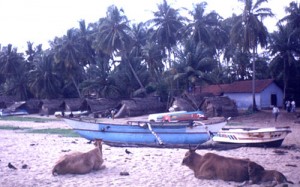
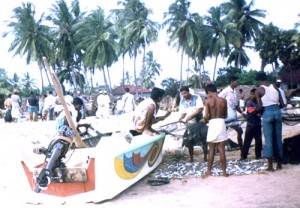
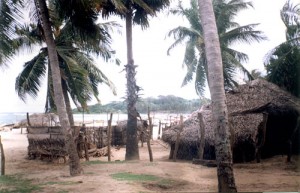
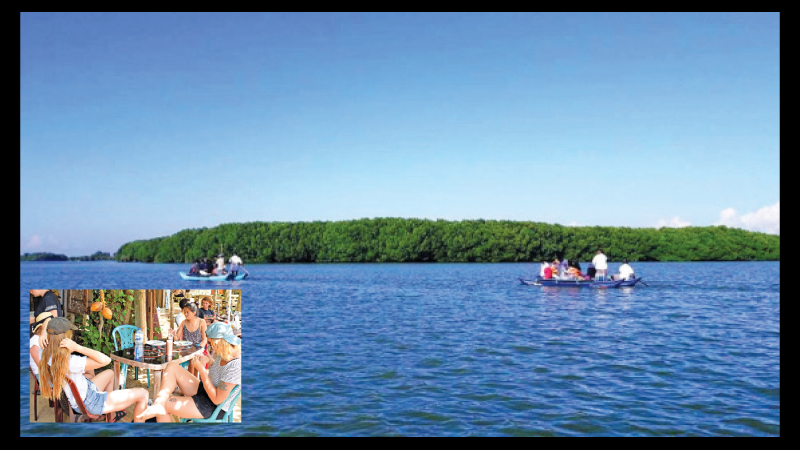
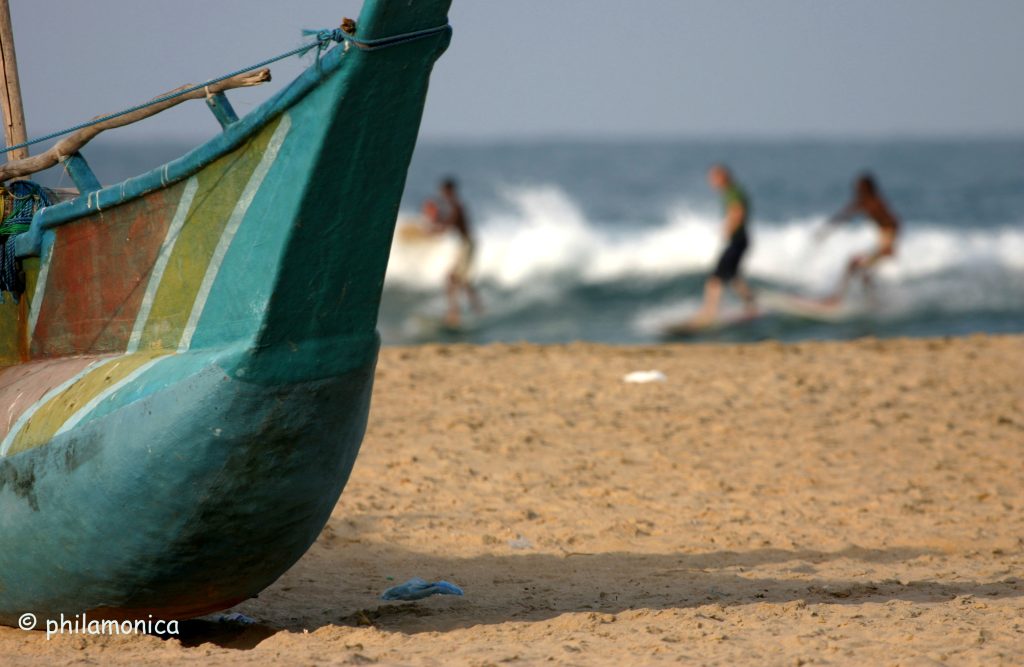

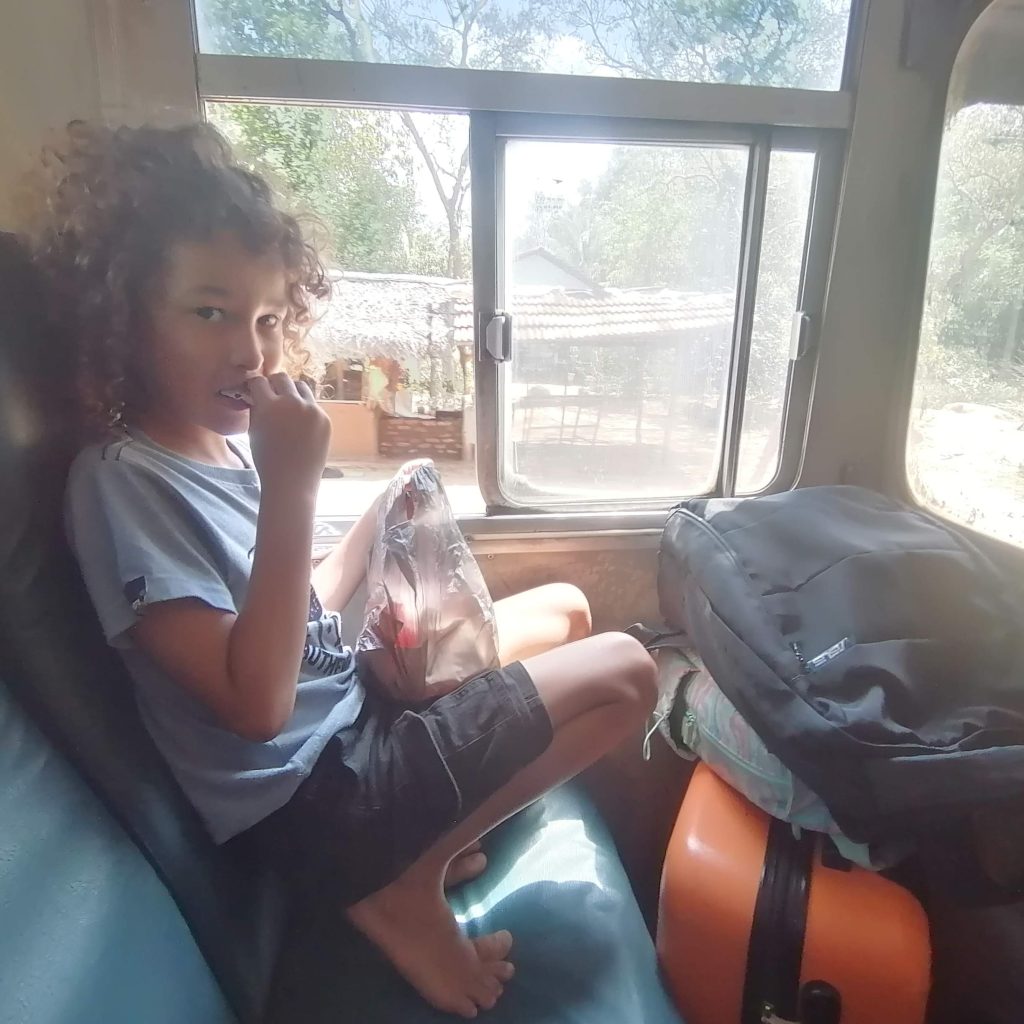
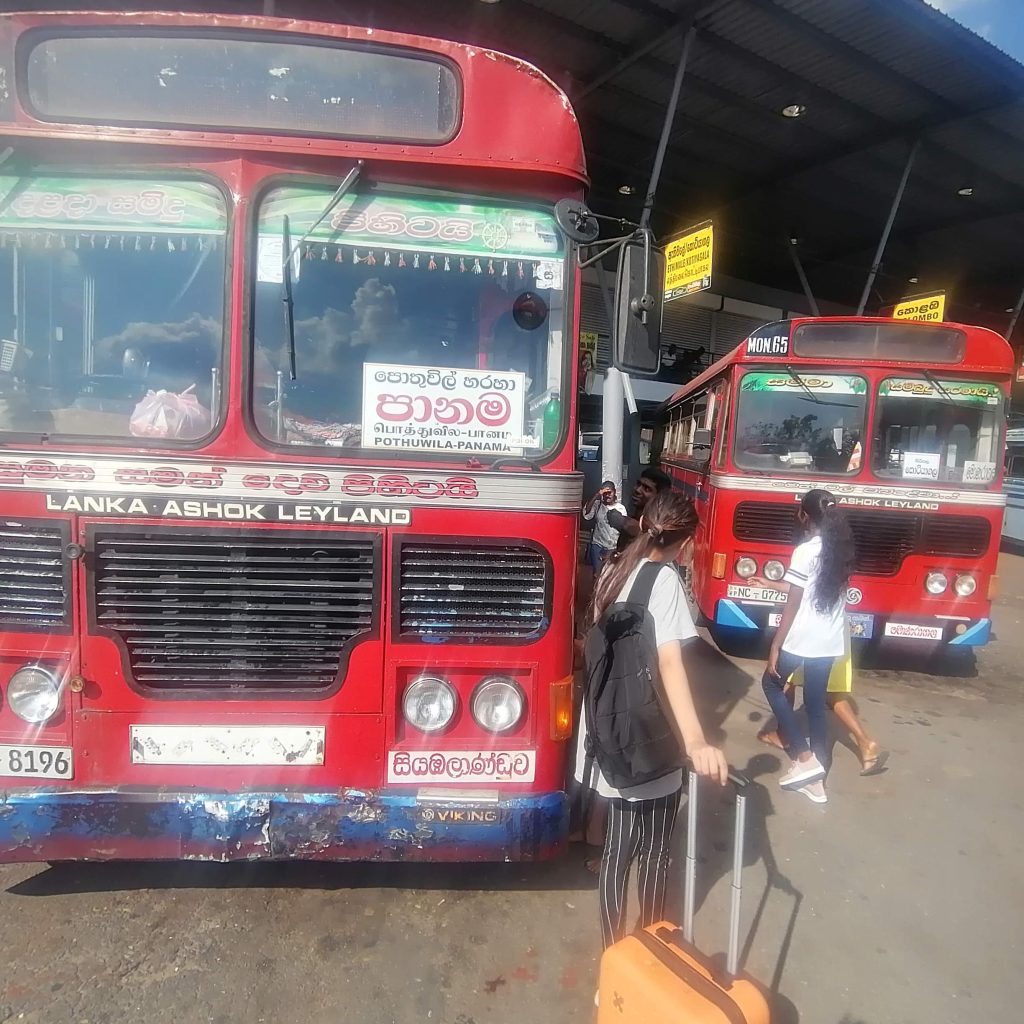
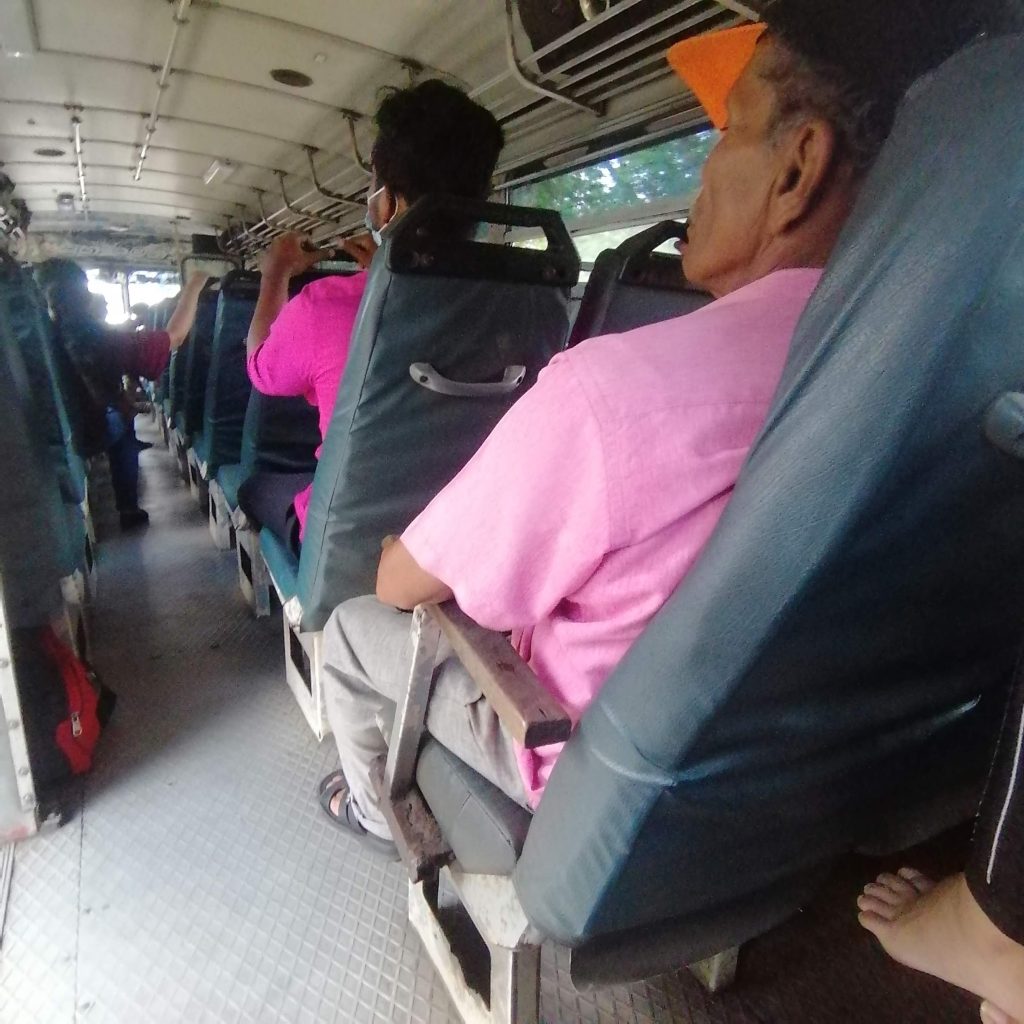
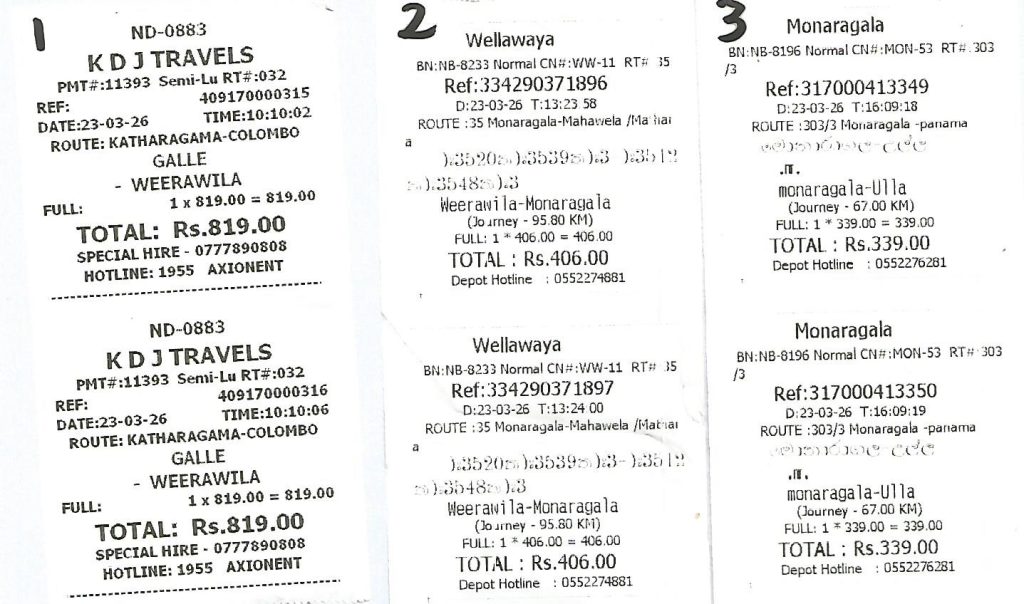
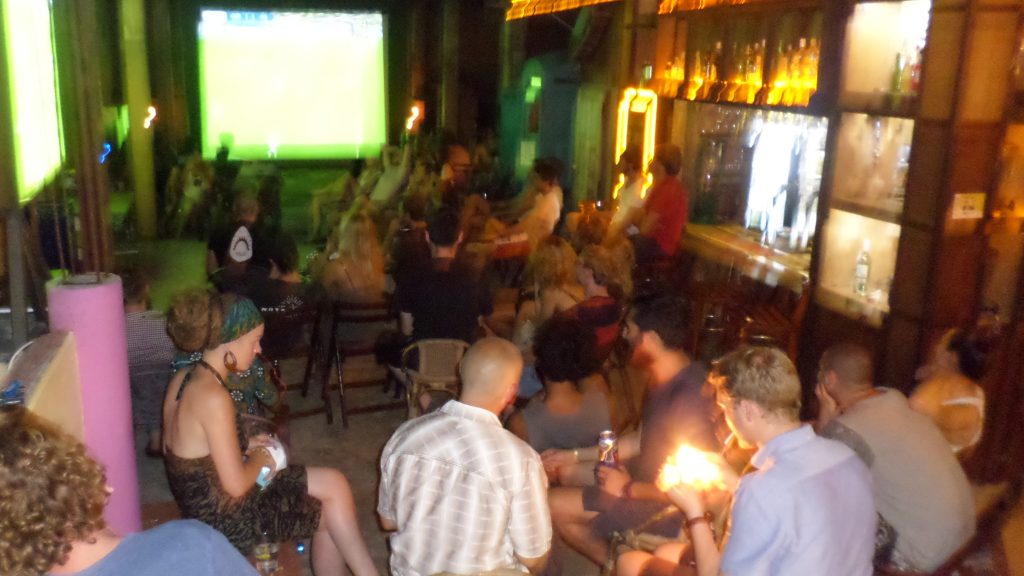
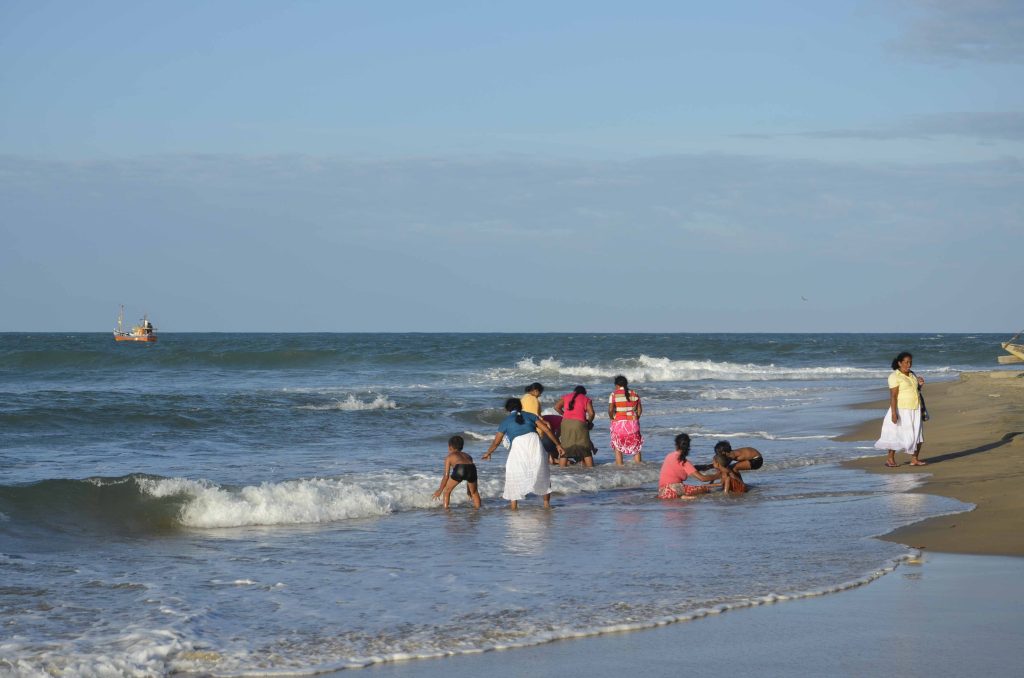
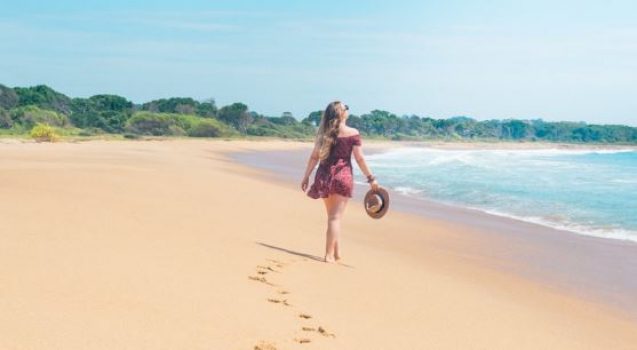
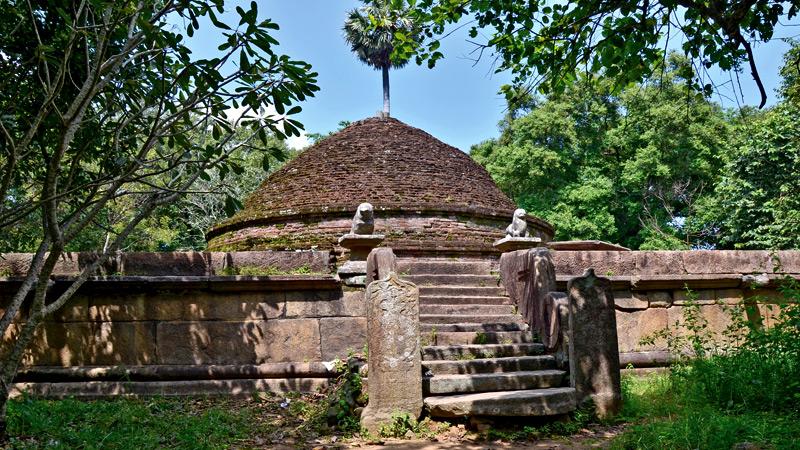
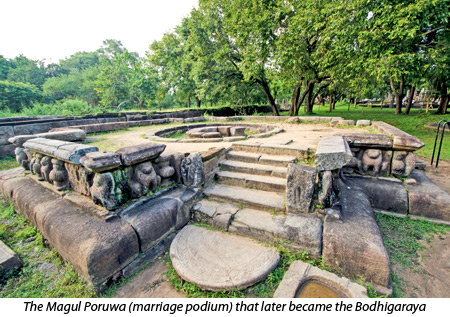

 From Pottuvil, we turned left on the Siyabalanduwa – Moneragala road, beguiled by the panoramic views of the serene rural landscape. Lush green paddy fields that run as far as eye can see and the shade of Kumbuk trees beside the road protected us from the late afternoon sun.
From Pottuvil, we turned left on the Siyabalanduwa – Moneragala road, beguiled by the panoramic views of the serene rural landscape. Lush green paddy fields that run as far as eye can see and the shade of Kumbuk trees beside the road protected us from the late afternoon sun. The Magul Maha Vihara is believed to be a temple complex with a vibrant history dating back to the times of King Kavantissa who ruled the Ruhuna Kingdom. However, varying sources claim that King Dhatusena (453-473 AD) built the complex, while various other monarchs renovated it through the centuries. From all the legends that surround the Vihara, the most arresting is the story of King Kavantissa and Princess Viharamaha Devi.
The Magul Maha Vihara is believed to be a temple complex with a vibrant history dating back to the times of King Kavantissa who ruled the Ruhuna Kingdom. However, varying sources claim that King Dhatusena (453-473 AD) built the complex, while various other monarchs renovated it through the centuries. From all the legends that surround the Vihara, the most arresting is the story of King Kavantissa and Princess Viharamaha Devi.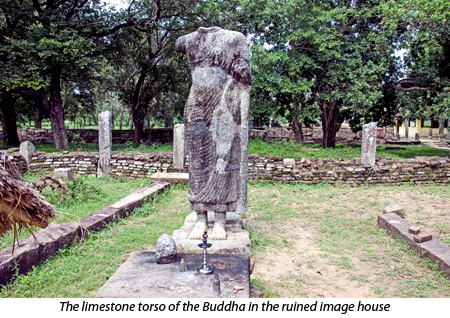
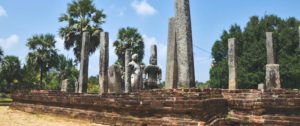
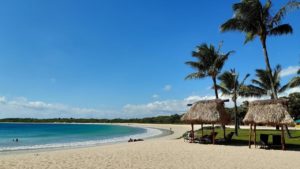
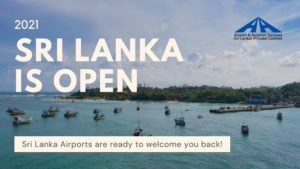
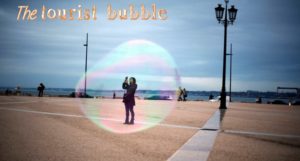
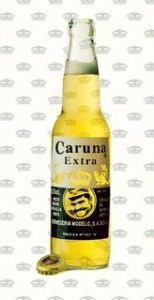
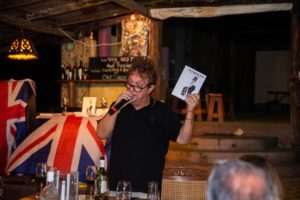
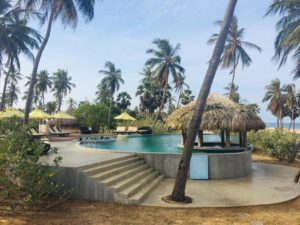
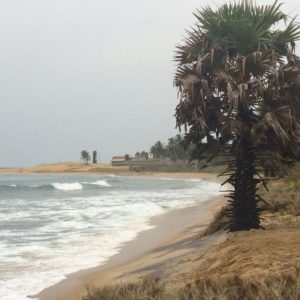
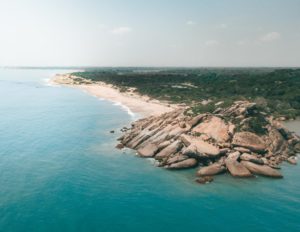
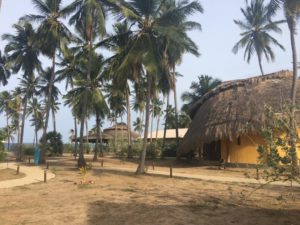
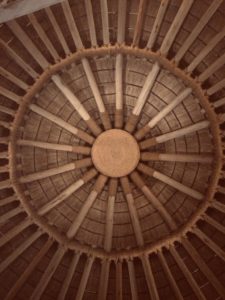
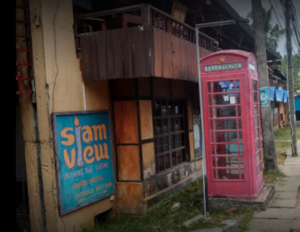
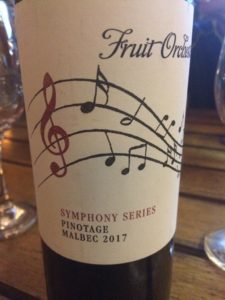
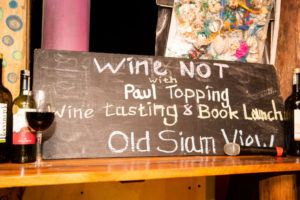
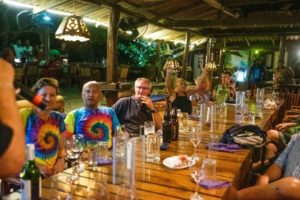
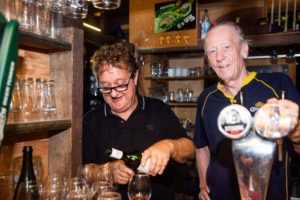
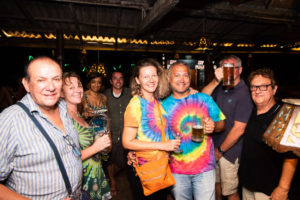
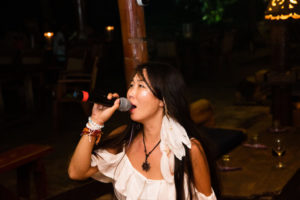
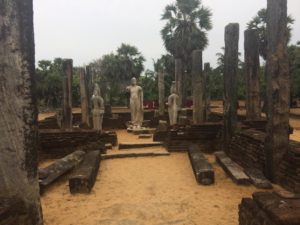
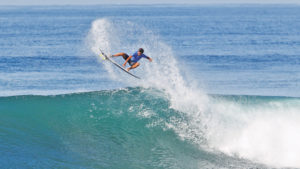
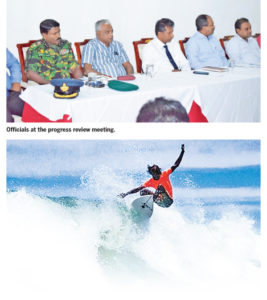

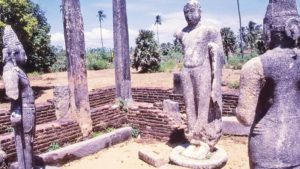
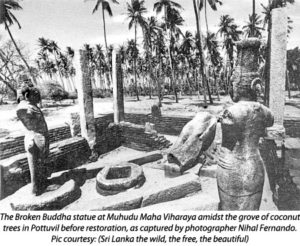
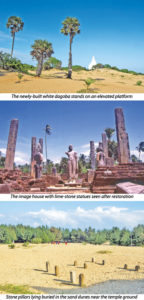
 Arugam Forum
Arugam Forum Arugam Photo Galleries on Picasa
Arugam Photo Galleries on Picasa Old Website
Old Website Press Coverage
Press Coverage Surf Forecast for Arugam Bay
Surf Forecast for Arugam Bay
TODAY’s Comments